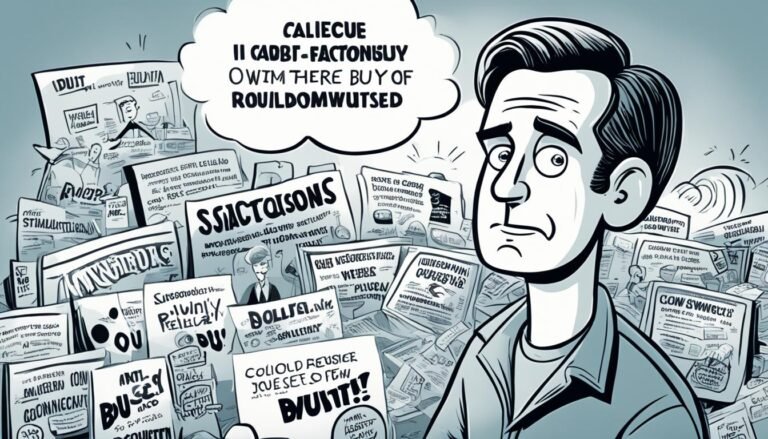Human Psychology in Marketing
In the vast landscape of marketing, understanding human psychology is like having a key to unlock the hidden desires and motivations of your target audience. It's like peering through a window into the intricate workings of the human mind, allowing you to tap into deep-rooted emotions and influence consumer behavior.
But what is it about human psychology that makes it so integral to the success of marketing campaigns? How can you leverage this knowledge to create compelling messages that resonate with your audience on a subconscious level?
Prepare to embark on a journey where the power of emotions, the allure of social proof, and the subtleties of cognitive biases await your exploration.
So, step inside, and let's uncover the secrets of human psychology in marketing.
Key Takeaways
- Emotions have a significant impact on consumer behavior, and emotional branding can create strong connections with the audience.
- Social influence, such as testimonials, celebrity endorsements, and social media influencers, plays a crucial role in shaping consumer behavior.
- Cognitive biases, such as anchoring bias, availability heuristic, and confirmation bias, influence consumer decision-making and can be utilized in marketing strategies.
- The scarcity principle, through limited time offers, limited quantity, and exclusive access, triggers a sense of urgency and drives consumer demand.
The Power of Emotions
Understanding the profound impact emotions have on consumer behavior is crucial for marketers seeking to create persuasive and influential marketing campaigns. Emotions have the power to influence our decision-making process, and this is where the power of storytelling and emotional branding comes into play.
Storytelling has been used for centuries to captivate audiences and convey messages in a way that resonates with them emotionally. By telling a compelling story, marketers can tap into the emotions of their target audience, creating a strong connection that goes beyond the product or service being promoted. When consumers feel emotionally connected to a brand, they're more likely to develop loyalty and trust, leading to increased sales and customer satisfaction.
Emotional branding takes this concept a step further by associating a brand with specific emotions. By carefully crafting brand experiences and messaging that elicit positive emotions, marketers can create a lasting impression in the minds of consumers. This emotional connection can make a brand more memorable and differentiate it from competitors.
Research has shown that emotions play a significant role in consumer decision-making, often overshadowing rational thinking. By understanding the power of storytelling and emotional branding, marketers can tap into this emotional influence and create marketing campaigns that resonate with their target audience on a deeper level.
The Influence of Social Proof
Social proof is a powerful psychological phenomenon that can significantly influence consumer behavior. In the world of marketing, social influence plays a crucial role in shaping purchasing decisions. People tend to look to others for guidance on what to buy, particularly when faced with a wide range of choices.
Here are three ways in which social proof can impact consumer behavior:
- Testimonials and reviews: Positive testimonials and reviews from satisfied customers can be incredibly persuasive. When potential buyers see that others have had a positive experience with a product or service, they're more likely to trust the brand and make a purchase.
- Celebrity endorsements: Celebrity endorsements have long been used as a marketing strategy to influence consumer behavior. When a well-known public figure promotes a product or service, consumers may perceive it to be of higher quality, leading to an increased likelihood of purchasing.
- Social media influencers: With the rise of social media, influencers have become a powerful force in shaping consumer behavior. Their opinions and recommendations are often seen as authentic and relatable, making them highly influential in driving purchasing decisions.
Understanding the power of social proof and leveraging it effectively in marketing campaigns can have a significant impact on consumer behavior. By incorporating testimonials, celebrity endorsements, and partnering with social media influencers, brands can harness the influence of social proof to drive sales and increase customer loyalty.
Cognitive Biases in Marketing
Cognitive biases play a crucial role in shaping consumer behavior and can greatly impact marketing strategies. These biases refer to the systematic errors in thinking that individuals unknowingly make, leading to deviations from rational decision-making. Understanding cognitive biases in decision making is essential for marketers as it allows them to tap into the subconscious influences on consumer behavior.
One common cognitive bias is the anchoring bias, where individuals rely heavily on the first piece of information they receive when making decisions. Marketers can utilize this bias by strategically presenting the most favorable information first, thereby influencing consumers' perception of value.
Another powerful cognitive bias is the availability heuristic, which occurs when individuals make judgments based on the ease with which they can bring examples to mind. Marketers can leverage this bias by creating memorable and impactful brand experiences that consumers are more likely to recall and associate positively with their products or services.
The confirmation bias is another cognitive bias that influences decision making. This bias occurs when individuals seek out information that confirms their existing beliefs and disregard contradictory evidence. Marketers can capitalize on this bias by tailoring their messaging to align with consumers' preconceived notions, reinforcing their existing beliefs and increasing the likelihood of purchase.
The Scarcity Principle
The Scarcity Principle is a powerful psychological trigger that can significantly impact consumer behavior. When people perceive a product or opportunity to be scarce, they experience a sense of urgency and fear of missing out, leading them to make quicker decisions and take immediate action.
Psychological Triggers of Scarcity
By tapping into the psychological triggers of scarcity, marketers can leverage the innate fear of missing out in order to drive consumer demand and increase sales. Scarcity tactics have long been used in marketing to create a sense of urgency and exclusivity.
Here are three ways in which psychological triggers of scarcity can be utilized effectively:
- Limited Time Offers: Creating time-limited promotions or discounts can make consumers feel compelled to act quickly, fearing they may miss out on a great deal.
- Limited Quantity: Highlighting limited stock or availability creates a sense of scarcity, making consumers feel the need to purchase before the product runs out.
- Exclusive Access: Offering exclusive access to certain products or experiences creates a feeling of privilege and exclusivity, triggering the fear of missing out and driving demand.
Impact on Consumer Behavior
Harnessing the power of scarcity can significantly impact consumer behavior and drive purchasing decisions. The scarcity principle, a psychological trigger, taps into consumers' fear of missing out and compels them to take immediate action.
When faced with limited availability or a time-sensitive offer, consumers experience a heightened sense of urgency, which influences their decision-making process. This principle is widely utilized in persuasive copywriting, where marketers create a sense of scarcity by emphasizing limited stock, exclusive deals, or time-limited promotions.
By creating a perception of scarcity, marketers can influence consumer decision making and increase the likelihood of a purchase. Incorporating scarcity in marketing strategies not only taps into consumers' innate desire for exclusivity, but also creates a sense of urgency that encourages immediate action.
Thus, understanding the impact of scarcity on consumer behavior can be a powerful tool in driving sales and increasing conversion rates.
The Role of Anchoring in Pricing
When it comes to pricing, there's a fascinating phenomenon known as anchoring that plays a crucial role in shaping consumer perception.
Anchoring refers to the cognitive bias where individuals rely heavily on the first piece of information they receive when making judgments or decisions.
In the context of pricing, this means that the initial price presented to consumers acts as an anchor, influencing their perception of value and subsequently affecting their willingness to pay.
Understanding the role of anchoring in pricing can provide marketers with valuable insights into how to strategically set prices to maximize profitability and appeal to consumers.
Pricing Influences Perception
The role of anchoring in pricing significantly influences perception, shaping how consumers perceive the value of a product or service. Anchoring is a cognitive bias that occurs when individuals rely heavily on the first piece of information they receive when making judgments or decisions.
In the context of pricing, anchoring occurs when consumers use the initial price they see as a reference point for evaluating the value of a product or service. This has important implications for marketers, as it allows them to strategically manipulate consumer perceptions through pricing strategies.
By setting a higher initial price, marketers can create the perception of higher value, making consumers more willing to pay. Conversely, setting a lower initial price can lead consumers to perceive the product as lower quality or less valuable.
Understanding the role of anchoring in pricing is crucial for marketers to effectively position their products and services in the market.
Cognitive Bias in Pricing
Building on the understanding of how pricing influences perception, let's now explore the cognitive bias at play in pricing strategies: the role of anchoring.
Anchoring is a cognitive bias that occurs when individuals rely heavily on the first piece of information they receive when making a decision. In the context of pricing, anchoring is used to manipulate consumers' perception of value. By presenting a higher initial price, businesses can anchor customers' expectations and make subsequent prices seem more reasonable and attractive.
This cognitive bias in decision making is further influenced by the role of framing in pricing. How prices are framed, whether as a discount or an increase, can significantly impact consumers' willingness to pay.
Understanding and leveraging cognitive biases, such as anchoring and framing, can help businesses effectively price their products and influence consumer behavior.
The Impact of Color Psychology
Color psychology plays a pivotal role in influencing consumer behavior and shaping their perception of brands. The colors used in marketing materials, such as logos, packaging, and advertisements, can evoke certain emotions and associations that can have a profound impact on consumers.
Here are three key ways in which color psychology affects consumer behavior:
- Color symbolism: Different colors are associated with different meanings and emotions. For example, red is often associated with energy, passion, and excitement, while blue is associated with calmness, trust, and reliability. Understanding these color associations allows marketers to strategically choose colors that align with their brand identity and messaging.
- Color perception: The way colors are perceived can also vary depending on cultural and personal factors. For instance, in Western cultures, white is often associated with purity and innocence, while in some Eastern cultures, it's associated with mourning. Marketers must consider these cultural nuances and ensure that their color choices are appropriate and resonate with their target audience.
- Color combinations: The combination of colors used in marketing materials can also impact consumer perception. Certain color combinations can create a sense of harmony and balance, while others can create contrast and grab attention. Marketers need to carefully consider the colors they use together to create the desired effect and convey their brand message effectively.
Understanding the impact of color psychology allows marketers to leverage colors strategically to influence consumer behavior and shape brand perception. By carefully selecting colors that align with their brand identity and considering cultural and personal factors, marketers can create powerful marketing materials that resonate with their target audience.
The Importance of Branding
When it comes to branding, visual impact plays a crucial role. A strong visual identity can instantly capture the attention of consumers and make your brand memorable.
Additionally, branding is about creating emotional connections with your audience. By evoking positive emotions and aligning your brand with their values, you can cultivate a loyal customer base.
Visual Impact in Branding
Visual impact plays a pivotal role in the success of branding, as it captures attention, communicates the essence of a brand, and influences consumer perception.
Visual storytelling in branding: The use of compelling visuals helps brands tell their story in a way that words alone cannot. By creating a visual narrative, brands can evoke emotions, build connections, and engage consumers on a deeper level.
The psychology of brand logos: Logos are a powerful visual tool that can instantly communicate a brand's identity and values. The design, colors, and shapes used in a logo can evoke specific emotions and associations, influencing how consumers perceive and interact with a brand.
Memorable visual elements: Strong visual elements such as colors, typography, and imagery can leave a lasting impression on consumers. These elements help create brand recognition and differentiation, making the brand more memorable and increasing the likelihood of repeat business.
Emotional Connections With Brands
The power of visual impact in branding extends beyond capturing attention and influencing perception; it plays a crucial role in establishing emotional connections with consumers, highlighting the importance of effective branding strategies. Emotional branding is a marketing approach that aims to create a strong emotional bond between consumers and brands. By appealing to consumers' emotions, brands can foster loyalty and a deeper connection, ultimately leading to increased sales and customer advocacy. Emotional branding goes beyond simply selling a product or service; it taps into consumers' values, beliefs, and aspirations. When consumers feel emotionally connected to a brand, they are more likely to become loyal customers and advocates, spreading positive word-of-mouth and influencing others to choose the brand.
To better understand the impact of emotional branding on consumer loyalty, let's consider the following table:
| Emotional Branding Strategies | Benefits for Consumer Loyalty |
|---|---|
| Storytelling | Creates a sense of connection |
| Personalization | Makes consumers feel valued |
| Creating a brand community | Fosters a sense of belonging |
As seen in the table, emotional branding strategies such as storytelling, personalization, and creating a brand community can significantly impact consumer loyalty. When brands tell compelling stories that resonate with consumers' emotions, it creates a sense of connection, making consumers feel more attached to the brand. Personalization, on the other hand, makes consumers feel valued and understood, leading to increased loyalty. Lastly, creating a brand community fosters a sense of belonging, where consumers feel like they are part of something greater than themselves. These emotional connections formed through branding strategies ultimately contribute to stronger consumer loyalty and long-term success for brands.
Building Brand Recognition
Building brand recognition is crucial for businesses to establish a strong presence in the market and differentiate themselves from competitors. With the ever-increasing competition, it's essential to have effective branding strategies in place to capture the attention and loyalty of consumers.
Here are three key reasons why building brand recognition is of utmost importance:
- Differentiation: In a saturated market, where consumers are bombarded with numerous choices, having a distinctive brand identity helps businesses stand out. Brand recognition allows consumers to easily identify and differentiate your products or services from competitors, increasing the chances of them choosing your brand over others.
- Trust and Familiarity: Building brand recognition fosters trust and familiarity among consumers. When consumers repeatedly see and recognize your brand, it creates a sense of reliability and consistency. This can lead to increased consumer loyalty and a higher likelihood of repeat purchases.
- Competitive Advantage: A strong brand recognition gives businesses a competitive edge. It enables them to charge premium prices, attract new customers, and retain existing ones. Consumers are more likely to choose a brand they're familiar with and trust, even if it means paying a little more.
The Psychology of Persuasive Copywriting
To effectively engage and persuade your audience through copywriting, understanding the psychology behind persuasive tactics is essential. By utilizing persuasive language and tapping into the subconscious influence of your readers, you can create compelling copy that drives action and achieves your marketing goals.
One of the key strategies in persuasive copywriting is the use of emotional appeals. Emotions play a significant role in decision-making, and by evoking strong emotions in your copy, you can sway your audience towards your desired outcome. Whether it's fear, excitement, or happiness, aligning your messaging with these emotions will capture attention and drive engagement.
Another effective tactic is the use of social proof. Humans are social creatures, and we often rely on the actions and opinions of others to guide our own choices. By showcasing testimonials, reviews, or endorsements in your copy, you can leverage the power of social proof to persuade your audience to take action.
To further enhance your persuasive copywriting, consider incorporating the principles of reciprocity and scarcity. Reciprocity is the idea that people feel obligated to return a favor or act in kind when someone has done something for them. By offering valuable content or incentives in your copy, you can trigger this sense of reciprocity and increase the likelihood of a positive response.
Scarcity, on the other hand, creates a sense of urgency and exclusivity. By highlighting limited availability or time-sensitive offers in your copy, you can tap into the fear of missing out and prompt your audience to take immediate action.
Incorporating these persuasive tactics into your copywriting can greatly enhance its effectiveness. By understanding the psychology behind persuasive language and subconscious influence, you can engage and compel your audience to take the desired actions, ultimately driving the success of your marketing efforts.
| Persuasive Tactics | Key Benefits |
|---|---|
| Emotional Appeals | Captures attention, drives engagement |
| Social Proof | Influences decision-making, builds trust |
| Reciprocity | Increases positive response, drives action |
| Scarcity | Creates urgency, prompts immediate action |
Understanding Consumer Decision-Making
Understanding consumer decision-making is crucial for marketers to effectively target and influence their audience's choices. By gaining insights into the factors that influence consumer preferences and the decision-making process, marketers can develop strategies that align with consumer needs and desires.
Here are three key aspects to consider:
- Emotional drivers: Emotions play a significant role in consumer decision-making. Understanding the emotional triggers that influence consumer behavior can help marketers create compelling campaigns that resonate with their target audience. By appealing to consumers' emotions, marketers can establish a strong connection and build brand loyalty.
- Cognitive biases: Consumers are prone to cognitive biases, which can impact their decision-making process. Marketers need to understand these biases, such as confirmation bias or anchoring bias, to effectively shape consumer perceptions and preferences. By leveraging these biases, marketers can guide consumers towards choosing their products or services over competitors.
- Social influence: Consumers are influenced by the opinions and behaviors of others. Marketers can tap into this social influence by incorporating social proof, testimonials, or endorsements into their marketing efforts. By showcasing positive experiences and demonstrating social acceptance, marketers can sway consumer decisions in their favor.
Applying Behavioral Economics in Marketing
Gaining an understanding of consumer decision-making is essential for marketers. One powerful approach to this is applying the principles of behavioral economics in marketing strategies. Behavioral economics explores the psychology of consumer decision making and behavior, and it provides valuable insights into how individuals make choices and respond to different marketing stimuli.
By applying behavioral economics in advertising, marketers can leverage these insights to create more effective and persuasive marketing campaigns. For example, understanding the concept of loss aversion can help marketers frame their messaging in a way that highlights the potential losses associated with not choosing their product or service. This taps into consumers' natural tendency to avoid losses, increasing the perceived value of the offering.
Another key principle of behavioral economics is social proof. People often look to others for guidance when making decisions. By incorporating testimonials, reviews, and social media influencers into marketing efforts, marketers can influence consumer behavior by demonstrating that others have already made positive choices.
Additionally, the use of scarcity and urgency can create a sense of FOMO (fear of missing out) in consumers, driving them to make quicker purchasing decisions. By highlighting limited availability or time-limited offers, marketers can tap into consumers' desire for exclusivity and create a sense of urgency.
Conclusion
In the world of marketing, understanding human psychology is a powerful tool. By tapping into emotions, utilizing social proof, and leveraging cognitive biases, marketers can influence consumer decision-making.
The scarcity principle and anchoring in pricing further enhance the persuasive power of marketing strategies. Additionally, effective branding and persuasive copywriting play crucial roles in capturing consumers' attention.
By applying behavioral economics principles, marketers can create compelling campaigns that resonate with their target audience. Ultimately, psychology is the key to unlocking the potential of marketing strategies and driving consumer behavior.







